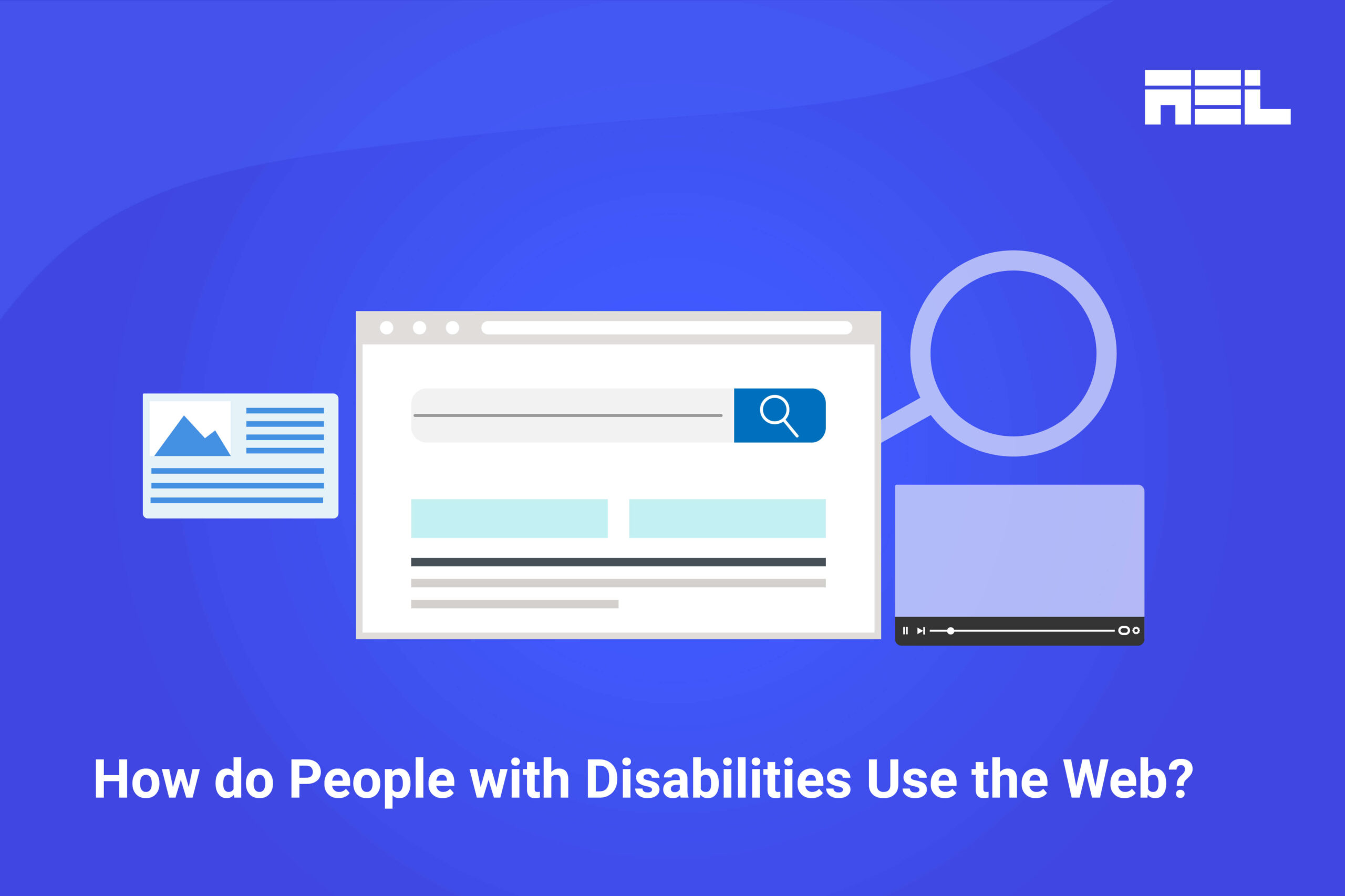Individuals facing vision challenges rely on screen readers, and those experiencing mobility issues find assistance through voice recognition software for web access.
Captions and transcripts help those who have hearing impairments, while simple interfaces with text-to-speech assist people with cognitive challenges.
Assistive tools are vital for disabled users to use the web. Here are some examples.
Table of Contents
1. Screen Readers
Blind or low-vision users use screen readers to navigate websites to consume content. These software convert text and other elements into speech or braille.
Popular screen readers include JAWS, and NVDA (NonVisual Desktop Access), for Windows and VoiceOver (for macOS and iOS devices).
2. Speech Recognition Software
People with mobility impairments who cannot use the keyboard or mouse rely on speech recognition to navigate the web. Speech recognition may be used for a number of situations such as navigating and interacting with buttons, links and other interactive elements on websites. It can also be used as an alternative to typing through the use of voice dictation. Speech recognition isn’t limited to users with mobility and motor impairments, and can be beneficial to those users with learning disabilities who rely on speech over typing.
There are various types of Speech Recognition software. Dragon software is a popular dictation software for Windows. This is helpful for people to write emails, or documents who cannot use the keyboard.
Windows also has built-in Windows Speech Recognition, which is used as software that can be operated using voice commands. Voice Control from Apple for iOS is also a popular voice command software. Users can switch between apps, or adjust volume controls using their voice.
The most popular type of software most people have in their phone, or homes are voice assistants such as Alexa, Siri and Google Assistant.
Additionally, some screen readers also offer speech input support like JAWS, and VoiceOver.
3. Magnification Software
Users with low vision rely on software to enlarge text and images on websites to help them see the content more clearly.
Some popular magnification software include the built-in Zoom magnification for macOS called macOS Zoom, and Windows Magnifier for Windows. A more commonly used third-party magnification software is ZoomText..
4. Browser Extensions
Various browser extensions help people with different disabilities by offering features like text-to-speech, fonts for dyslexia, and adjusting color contrast.
There is also a browser extension called Chrome Screen Reader extension that acts like a screen reader and works specifically with Chrome to read content aloud.
5. Braille Displays
Braille displays help people who are blind or deaf-blind read website content. These devices convert digital text into braille output, allowing users to read through tactile. Refreshable braille displays are common today where a braille display can be connected to a computer. The braille keys refresh dynamically as a user moves around on the screen providing live feedback based on the content.
Most Braille Displays are compatible with JAWS that are connected to the computer with a USB cable or via bluetooth. Depending on the version, there are braille displays that offer support for iOS and Mac as well as Windows.
6. Keyboard Navigation
Users with mobility issues or screen reader users rely on the keyboard or keyboard commands to navigate the web. Those users who have vision and use the keyboard, are referred to as keyboard-only users. This user group utilizes the tab and shift-tab keys to move forward and backwards between interactive elements like buttons and links. Screen reader users use keyboard shortcuts associated with the specific software to navigate the web page faster.
7. Captioning and Transcription Services
People who are deaf or have trouble hearing depend on captions and transcriptions for videos to consume content in a format that is accessible to them. These services make sure everyone can access the content by providing accurate captions.
Wrapping Up
All these tools help people with disabilities use the web more easily. They ensure everyone can get information and join online activities. If you want to make your website more accessible, try AEL Data’s web accessibility checker! It makes sure your site is easy for everyone to use.



